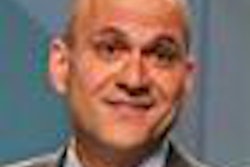Little to no physician work efficiencies exist when different providers interpret different imaging scans on the same patient, according to a new study published online April 9 in the Journal of the American College of Radiology (JACR).
The findings bring into question a payment policy initiated last year by the U.S. Centers for Medicare and Medicaid Services (CMS), which reduced by 25% the professional payment to physicians providing multiple imaging services to the same patient in the same session, according to study lead author Dr. Richard Duszak, of the Harvey L. Neiman Health Policy Institute in Reston, VA, and colleagues. The cut applies to all physicians in a group or practice who interpret advanced diagnostic imaging scans performed on the same patient, in the same session.
Duszak's group analyzed Medicare relative value scale data to determine the relative contribution of preservice, intraservice, and postservice physician diagnostic imaging work activities. An expert panel assessed potential duplications of effort when separate examinations were performed during the same session by different physicians within the same group practice, then calculated the maximum potential work duplications for various imaging modalities and compared them with those used as the basis of CMS payment policy (JACR, April 9, 2013).
The researchers found no intraservice work duplication when different exam interpretations were provided by different physicians in the same group practice. Any work duplication was attributed to pre- and postservice activities, the team wrote.
When multiple interpretations within the same modality were provided by different physicians, the maximum potential duplicated preservice and postservice activities ranged from 5% (radiography, fluoroscopy, and nuclear medicine) to 13.6% (CT). Maximum mean potential duplicated work relative value units (RVUs) ranged from 0.0049 (radiography and fluoroscopy) to 0.0413 (CT) -- equating to overall potential total work reductions ranging from 1.39% (nuclear medicine) to 2.73% (CT), Duszak and colleagues wrote.
"Across all modalities, this corresponds to maximum Medicare professional component physician fee reductions of 1.23 for services within the same modality, much less than an order of magnitude smaller than those implemented by CMS," the team wrote. "For services from different modalities, potential duplications were too small to quantify."
CMS has now expanded the policy to apply to different physicians in the same group practice performing different imaging services to a patient during the same session, Duszak and colleagues wrote -- if a neuroradiologist interpreted a brain MRI examination on a patient with headache and nausea, and, shortly thereafter, an abdominal imager interpreted an abdominal ultrasound study on the same patient for the same indication, the latter physician's payment would be reduced on the basis of assumed efficiencies.
Why? It's not clear, according to the team.
"Our review of official communication from CMS reveals no substantive explanation for what methodologic analysis was used by the agency as the basis for different physician payment discounting," Duszak and colleagues wrote.




















